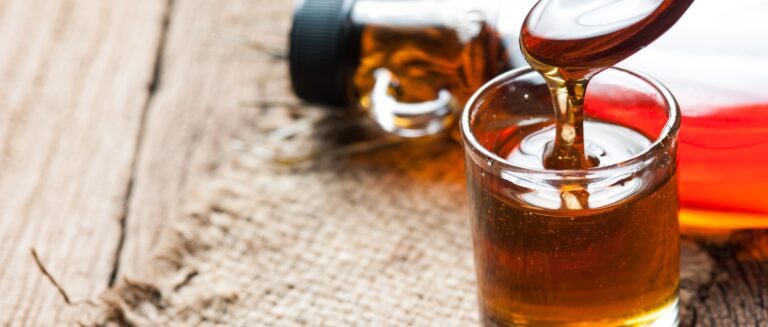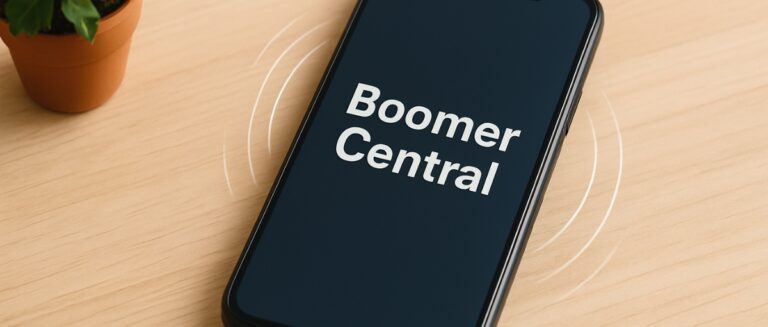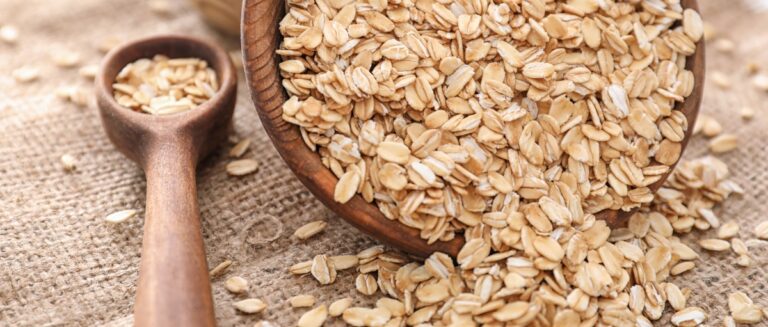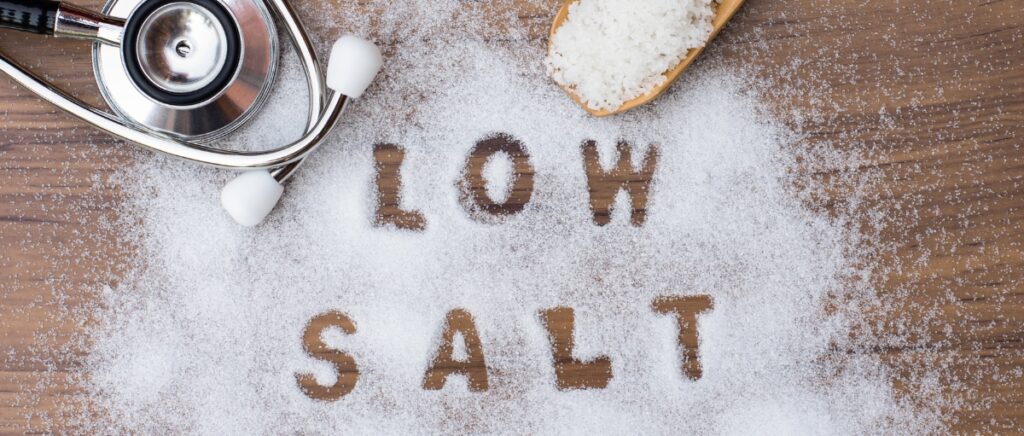For seniors, watching our sodium intake isn’t just about following doctor’s orders—it’s about taking charge of health. High-sodium diets can lead to increased blood pressure, putting us at greater risk for heart disease and stroke.
The average American consumes more than 3,400 milligrams of sodium daily. That’s more than double the American Heart Association’s recommended limit of 1,500 milligrams for most adults, especially those over 50.
We’ll explore easy, delicious low-sodium meals that will keep your taste buds and your doctor happy. We’ll cover everything from breakfast to dinner and share cooking tricks to boost flavor without reaching for the salt shaker. Let’s dive in and discover how easy and delicious low-sodium living can be. Your heart (and your palate) will thank you!”
Sodium and Senior Health
As we age, our bodies become more sensitive to sodium’s effects. But what exactly does too much salt do to a senior’s health?
High sodium intake can lead to several health issues that are particularly concerning for older adults:
- Increased Blood Pressure: Excess sodium causes your body to retain more water, putting extra strain on your blood vessels and heart.
- Heart Disease and Stroke Risk: Over time, this strain can lead to an increased risk of heart disease and stroke. In fact, according to the Centers for Disease Control and Prevention (CDC), heart disease remains the leading cause of death for adults 65 and older.
- Potential Bone Loss: High sodium levels may also contribute to calcium loss, which is particularly important for seniors at risk for osteoporosis.
How Much Salt is Too Much?
The American Heart Association recommends no more than 1,500 milligrams of sodium per day for most adults, especially those over 50. However, the average American consumes more than 3,400 milligrams daily, which is more than double the recommended limit. This amount is considered too much, particularly for seniors, as excess sodium can lead to increased blood pressure, a higher risk of heart disease and stroke, and potential bone loss.
Tailoring Your Sodium Intake
It’s important to note that sodium needs can vary based on individual health conditions. Some people with certain chronic conditions may need to limit their intake even further. Always consult a healthcare provider to determine the right sodium level for your health needs.
Remember, reducing sodium doesn’t happen overnight. It’s a gradual process that allows your taste buds to adjust. The good news? With simple strategies and delicious alternatives, you can create heart-healthy and full-flavored meals.
In the next section, we’ll explore how to become a “sodium sleuth,” identifying hidden sources of salt in your diet and learning to read nutrition labels like a pro. Get ready to take control of your sodium intake!
Hidden Salt Sources
Reducing sodium intake starts with knowing where it’s hiding. Some sources, like table salt, are obvious, but others might surprise you. Let’s uncover these sneaky sodium sources and learn how to spot them.
According to the Centers for Disease Control (CDC), about 40% of the sodium in our diets comes from just nine types of foods:
- Deli meat sandwiches
- Pizza
- Burritos and tacos
- Soups
- Savory Snacks (e.g., chips, crackers, popcorn)
- Poultry
- Pasta mixed dishes
- Burgers
- Egg dishes and omelets
Surprising Sodium Sources
But salt can lurk in unexpected places too. Keep an eye out for these less obvious high-sodium foods:
- Breakfast cereals
- Vegetable juices
- Canned vegetables
- Condiments and flavor packets
- Some dairy products
Even healthy recipes, such as veggie burgers, can contain sodium. Always check the label before assuming a food is low in sodium.
The Lowdown on Salt Substitutes
Salt substitutes, which often use potassium chloride instead of sodium chloride, can be an option for some people. However, they’re not suitable for everyone, especially those with kidney problems or on certain medications. Always consult with a healthcare provider before using salt substitutes.
Becoming a Nutrition Label Pro
Learning to read labels effectively is your secret weapon against excess sodium. Here’s what to look for:
- Serving Size: Check this first. All the information on the label is based on this amount.
- Sodium Content: Look for the milligrams (mg) of sodium per serving.
- Percent Daily Value (%DV): This tells you the percentage of the daily recommended amount of sodium in one serving. 5% DV or less is low, and 20% DV or more is high.
- Ingredients List: Sodium can hide under different names. Watch out for:
- Salt
- Sodium
- Monosodium glutamate (MSG)
- Baking soda (sodium bicarbonate)
- Disodium phosphate
When comparing products, look at the sodium content per 100 grams rather than per serving. Serving sizes can vary between brands, making direct comparisons tricky.
Be cautious with products labeled “reduced sodium” or “lower sodium.” While these products have less sodium than their regular counterparts, they may still contain more than expected. Always check the nutrition facts to be sure.
Strategies for Reducing Salt
Cutting back on salt doesn’t mean settling for bland meals. With a few clever techniques and a dash of creativity, delicious, low-sodium dishes can be created that will have taste buds dancing. Here’s how to keep the flavor while lowering the sodium.
Spice Up Your Life
Herbs and spices are the secret weapons in any low-sodium kitchen. They add depth and complexity to dishes without a grain of salt. Try these flavor boosters:
- Fresh herbs: Basil, cilantro, parsley, and mint add bright, fresh flavors.
- Dried spices: Cumin, paprika, and oregano bring warmth and depth.
- Aromatics: Garlic, onions, and ginger create a flavorful base for many dishes.
Experiment with different combinations to find your favorites. For example, in vegetable dishes, try rosemary and thyme with chicken or cumin and coriander.
Embrace Acidity
A splash of acidity can wake up a dish’s flavors, much like salt does. Consider these options:
- Citrus: Lemon, lime, or orange juice and zest
- Vinegars: Balsamic, apple cider, or rice vinegar
- Pickled vegetables: Capers, pickled onions, or sauerkraut (in moderation, as some can be high in sodium)
Umami: The Fifth Taste
Umami, often described as a savory or meaty taste, can add depth to side dishes without salt. Foods rich in umami include:
- Mushrooms
- Sweet potatoes
- Tomatoes
- Aged cheeses (use sparingly due to sodium content)
- Nutritional yeast
Retrain Your Taste Buds
Remember, the taste for salt is learned and can be unlearned. Gradually reducing sodium intake allows taste buds to adjust over time. Start by using less salt than usual in your cooking, then slowly decrease it over weeks or months.
Quick Tip: Mix equal parts dried oregano, thyme, basil, and garlic powder. Use this salt-free Italian seasoning on everything from salads to roasted vegetables.
By incorporating these strategies, heart-healthy and delicious meals are possible. In the next section, we’ll put these tips into practice with some easy, low-sodium breakfast ideas to start your day right.
Easy Low Sodium Meals for Seniors
Low-sodium recipes can be simpler to prepare than traditional home-cooked meals.
Here is the inspiration for these 12 easy, low-sodium meals.
Low Sodium Breakfasts
1. Overnight Oats with Fresh Berries
- Mix rolled oats with unsweetened almond milk.
- Add a dollop of Greek yogurt for creaminess.
- Top with fresh berries and a sprinkle of cinnamon.
2. Veggie-Packed Egg White Frittata
- Whisk egg whites with a mix of diced bell peppers, spinach, and mushrooms.
- Cook in a non-stick pan and finish under the broiler.
- Serve with a side of fresh fruit.
3. Low Sodium Breakfast Burritos
- Fill whole wheat tortillas with scrambled eggs, black beans, and diced tomatoes.
- Add a sprinkle of low-sodium cheese and fresh cilantro.
- Wrap individually and freeze for easy reheating.
4. Whole Grain Muffins with Fruit
- Bake a batch of whole grain muffins using mashed bananas or applesauce for moisture.
- Mix in blueberries or diced apples for added flavor.
- Freeze and defrost as needed for a quick breakfast.
Low Sodium Lunches
5. Turkey and Avocado on Whole Grain Bread
- Use low-sodium sliced turkey breast.
- Mash avocado with lemon juice as a creamy, salt-free spread.
- Add sliced tomatoes and lettuce for crunch.
6. Veggie-Hummus Wrap with Homemade Hummus
- Make your own low-sodium hummus by blending chickpeas, tahini, lemon juice, and garlic.
- Spread on a whole wheat wrap and fill with cucumber, carrots, and spinach.
7. Low Sodium Vegetable Soup
- Simmer a mix of your favorite vegetables in low-sodium vegetable broth.
- Season with herbs like thyme and rosemary.
- Add a squeeze of lemon juice before serving for brightness.
8. Grilled Chicken Salad with Homemade Vinaigrette
- Top mixed greens with grilled chicken breast, cherry tomatoes, and cucumber.
- Make a simple vinaigrette with olive oil, balsamic vinegar, and Dijon mustard.
Low Sodium Dinners
9. Sheet Pan Lemon Herb Chicken with Roasted Vegetables
- Marinate chicken breasts in lemon juice, olive oil, and fresh herbs.
- Roast on a sheet pan with a medley of colorful vegetables.
10. Skillet Mediterranean Quinoa with Chickpeas
- Cook quinoa in low-sodium vegetable broth.
- Add chickpeas, diced tomatoes, and spinach.
- Season with garlic, oregano, and a splash of lemon juice.
11. Low Sodium Meatloaf with Mushroom Gravy
- Use lean ground beef or turkey mixed with oats and eggs.
- Season with onion powder, garlic, and fresh herbs.
- Top with a gravy made from sautéed mushrooms and low-sodium beef broth.
12. Cauliflower “Mac” and Cheese
- Replace pasta with cauliflower florets.
- Make a creamy sauce using low-fat milk, low-sodium cheese, and nutritional yeast.
- Bake until golden and bubbly.
Low Sodium Snacks
- Fresh fruit and vegetable sticks.
- Unsalted mixed nuts with dried fruit.
- Air-popped popcorn seasoned with herbs.
- Homemade kale chips.
- Greek yogurt with fresh berries.
The main idea behind low sodium meal ideas is to fill up with protein and nutrient-dense whole foods. When you focus on satiety through high protein options, you won’t need to snack or fill up on salty things.
Your Journey to Low-Sodium Living
Embracing a low-sodium and healthy lifestyle doesn’t mean giving up delicious meals. It’s about discovering new flavors, getting creative in the kitchen, and prioritizing your health.
Remember, every small change adds up. Start by trying one low-sodium meal or snack idea from this article. You might be surprised that you don’t miss the salt as you experiment with new flavors and techniques.
Your taste buds will adapt, your cooking skills will improve, and most importantly, your heart will thank you. Here’s to flavorful meals and a healthier, happier you!
Sources
American Heart Association. (n.d.). How much sodium should I eat per day? Retrieved from https://www.heart.org/en/healthy-living/healthy-eating/eat-smart/sodium/how-much-sodium-should-i-eat-per-day
Mayo Clinic. (2024). Heart-healthy diet: 8 steps to prevent heart disease. Retrieved from https://www.mayoclinic.org/diseases-conditions/heart-disease/in-depth/heart-healthy-diet/art-20047702
Action on Salt. (n.d.). Salt and water retention. Retrieved from https://www.actiononsalt.org.uk/salthealth/salt-and-water-retention/
Centers for Disease Control and Prevention (CDC). (2024). Older Americans health fast stats. Retrieved from https://www.cdc.gov/nchs/fastats/older-american-health.htm
ScienceDirect. (2022). Salt intake study. Retrieved from https://www.sciencedirect.com/science/article/pii/S0147651322008648
U.S. Food and Drug Administration (FDA). (n.d.). Sodium in your diet. Retrieved from https://www.fda.gov/food/nutrition-education-resources-materials/sodium-your-diet











